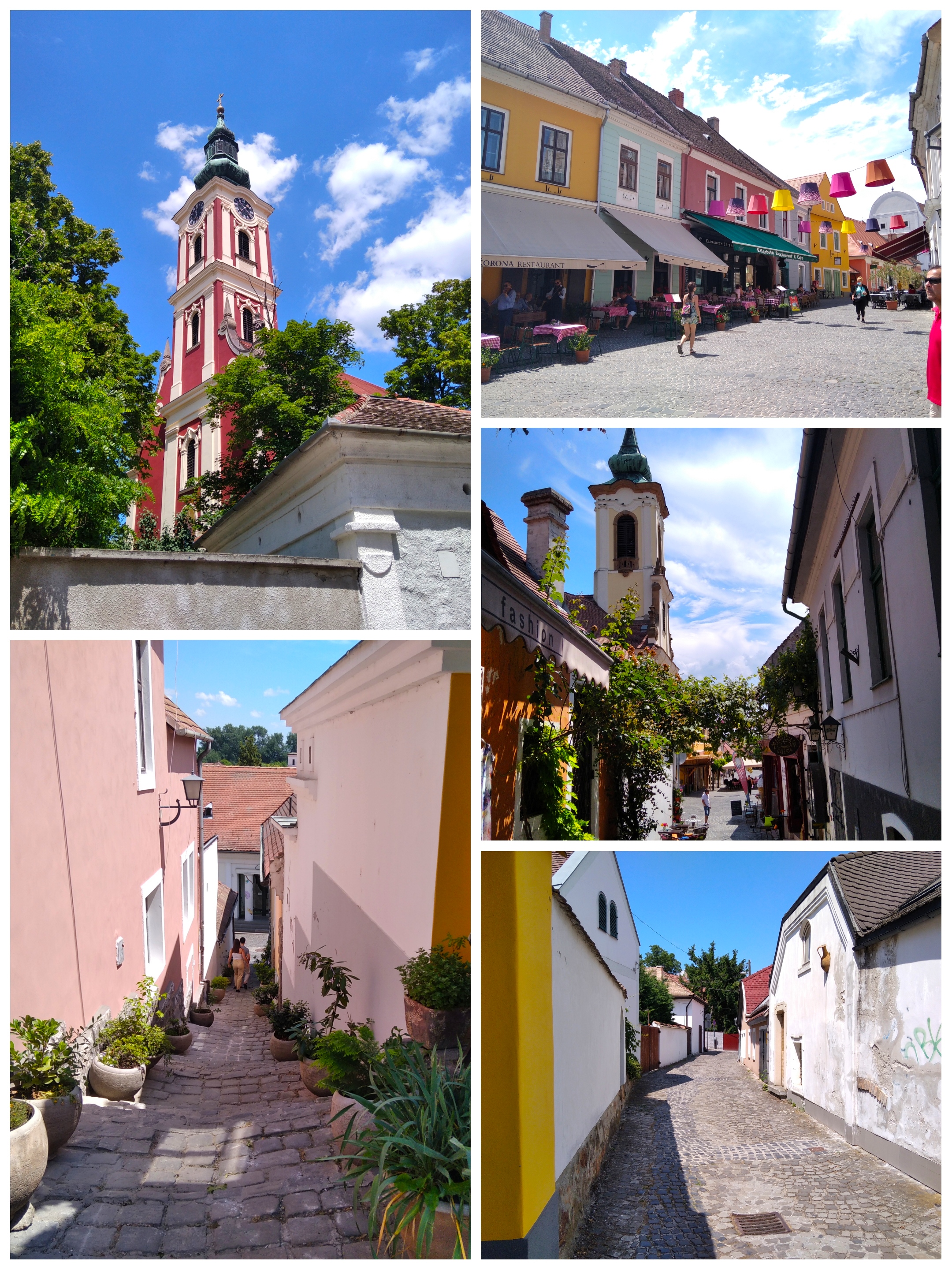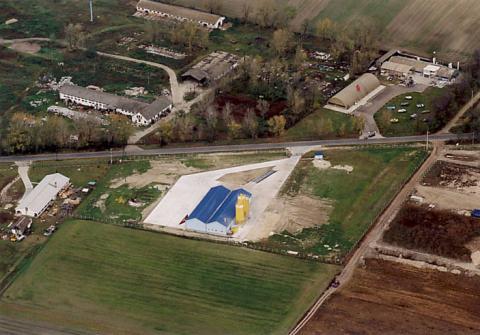|
Lórév
Lórév (Serbian: Ловра, ''Lovra'') is a village on Csepel Island in Hungary. It is situated in Pest County. Name Lórév means "horse ford" in Hungarian referring to the nearby ford of the Danube. Demographics Lórév is the only settlement in Hungary with an ethnic Serb majority. This small village of 307 people had 180 (58.63%) Serb inhabitants in 2001 (and 202 people with a Serb "cultural heritage"). 39.09% of the population are Hungarians (120 people). Also, the neighbouring village of Szigetcsép and the town of Ráckeve on the Csepel Island have Serb settlements. Not far to the north the Bunjevci settlement of Tököl is to be found. A tradition of mutual weddings between these two geographically close villages existed as well as strong connections with Serbs from the villages of Medina in the south, three villages north of Budapest -- Budakalász, Pomáz and Csobánka—and the small town of Szentendre. Religion According to the 2001 census the religious distr ... [...More Info...] [...Related Items...] OR: [Wikipedia] [Google] [Baidu] |
Serbs In Hungary
The Serbs in Hungary ( hu, Magyarországi szerbek, sr, Срби у Мађарској / ) are recognized as an ethnic minority, numbering 7,210 people or 0.1% of the total population (2011 census). The number of Serbs in Hungary has drastically diminished; in the 16th, 17th and 18th centuries large Serb communities existed throughout Hungary, notably in Buda (western Budapest), Baja, Szentendre and Szeged. The Serb community in the territory of present-day Hungary has its origin in migrations from the territory of medieval Serbian states during and after the Ottoman conquest of these states. Matthias Corvinus and his successors are known to have welcomed Serbs from the other side of the Danube, giving the exiled military commanders fiefdoms to rule and defend from the Ottomans. After the dissolution of Austro-Hungarian monarchy in 1918 and after new borders were defined by the Treaty of Trianon in 1920, only a small fraction of ethnic Serbs remained within the borders of post-Tri ... [...More Info...] [...Related Items...] OR: [Wikipedia] [Google] [Baidu] |
Szigetcsép
Szigetcsép is a village in Pest county, Hungary. The Csepel Island has two villages, Lórév (Lovra) and Szigetscép (Čip), and the town of Ráckeve which is inhabited by Serbs as well as Hungarians and Germans. In this Hungarian village, approximately one hundred Serbs are living with Hungarians and Germans. The majority of the old Serbian population moved from Szigetcsép to Serbia in 1924 to settle in the village of Bački Brestovac Bački Brestovac () is a village in Serbia. It is situated in the Odžaci municipality, in the West Bačka District, Vojvodina province. The village has a Serb ethnic majority and its population numbering 3,469 people (2002 census). Name Names in .... References Populated places in Pest County Serb communities in Hungary {{Pest-geo-stub ... [...More Info...] [...Related Items...] OR: [Wikipedia] [Google] [Baidu] |
Ráckeve
Ráckeve (Serbian language, Serbian: Српски Ковин / Srpski Kovin) is a town on Csepel Island in the county of , Hungary. Its residents are Magyars, with minority of Serbs. The Serbian Kovin Monastery, the oldest in Hungary and one of two in the Diocese of Buda of the Serbian Orthodox Church, was built in 1487 in the centre of Ráckeve. Also in central Ráckeve is the ''Savoy Castle'' of Prince Eugene of Savoy, built in the baroque style in 1702–50. History After the Árpád dynasty was established, the region of today's Ráckeve belonged to the List of Hungarian rulers, Hungarian king. In the Middle Ages, there was a settlement here called ''Ábrahámtelke'', and also a monastery built in the 12th century, mentioned in official document in 1212 the first time. In the 15th century many Serbs, Serb refugees came from the South, fleeing the invasions of the Ottoman Empire, Ottoman Turks. In this time, the settlement was called ''Kiskeue'', that is to say "Kiskeve ... [...More Info...] [...Related Items...] OR: [Wikipedia] [Google] [Baidu] |
Serbian Orthodox
The Serbian Orthodox Church ( sr-Cyrl, Српска православна црква, Srpska pravoslavna crkva) is one of the autocephalous (ecclesiastically independent) Eastern Orthodox Christian churches. The majority of the population in Serbia, Montenegro and the Republika Srpska entity of Bosnia and Herzegovina are members of the Serbian Orthodox Church. It is organized into metropolitanates and eparchies, located primarily in Serbia, Bosnia and Herzegovina, Montenegro, and Croatia. Other congregations are located in the Serb diaspora. The Serbian Patriarch serves as first among equals in his church. The current patriarch is Porfirije, enthroned on 19 February 2021. The Church achieved autocephalous status in 1219, under the leadership of Saint Sava, becoming the independent Archbishopric of Žiča. Its status was elevated to that of a patriarchate in 1346, and was known afterwards as the Serbian Patriarchate of Peć. This patriarchate was abolished by the Ottoman Em ... [...More Info...] [...Related Items...] OR: [Wikipedia] [Google] [Baidu] |
Calvinist
Calvinism (also called the Reformed Tradition, Reformed Protestantism, Reformed Christianity, or simply Reformed) is a major branch of Protestantism that follows the theological tradition and forms of Christian practice set down by John Calvin and other Reformation-era theologians. It emphasizes the sovereignty of God and the authority of the Bible. Calvinists broke from the Roman Catholic Church in the 16th century. Calvinists differ from Lutherans (another major branch of the Reformation) on the spiritual real presence of Christ in the Lord's Supper, theories of worship, the purpose and meaning of baptism, and the use of God's law for believers, among other points. The label ''Calvinism'' can be misleading, because the religious tradition it denotes has always been diverse, with a wide range of influences rather than a single founder; however, almost all of them drew heavily from the writings of Augustine of Hippo twelve hundred years prior to the Reformation. The ... [...More Info...] [...Related Items...] OR: [Wikipedia] [Google] [Baidu] |
Roman Catholic
Roman or Romans most often refers to: *Rome, the capital city of Italy *Ancient Rome, Roman civilization from 8th century BC to 5th century AD *Roman people, the people of ancient Rome *'' Epistle to the Romans'', shortened to ''Romans'', a letter in the New Testament of the Christian Bible Roman or Romans may also refer to: Arts and entertainment Music * Romans (band), a Japanese pop group * ''Roman'' (album), by Sound Horizon, 2006 * ''Roman'' (EP), by Teen Top, 2011 *" Roman (My Dear Boy)", a 2004 single by Morning Musume Film and television * Film Roman, an American animation studio * ''Roman'' (film), a 2006 American suspense-horror film * ''Romans'' (2013 film), an Indian Malayalam comedy film * ''Romans'' (2017 film), a British drama film * ''The Romans'' (''Doctor Who''), a serial in British TV series People *Roman (given name), a given name, including a list of people and fictional characters *Roman (surname), including a list of people named Roman or Romans *Ῥωμ� ... [...More Info...] [...Related Items...] OR: [Wikipedia] [Google] [Baidu] |
Szentendre
Szentendre () is a riverside town in Pest County, Hungary, between the capital city Budapest and Pilis Mountains, Pilis-Visegrád Mountains. The town is known for its museums (most notably the :hu: Szentendrei Szabadtéri Néprajzi Múzeum, Open-Air Ethnographic Museum), galleries, and artists. Due to its historic architecture and easy rail and river access, it has become a destination for tourists staying in Budapest. There are many facilities, including Gift shop, souvenir shops and restaurants, catering to these visitors. Name The name of the town is ultimately based on the Medieval Latin form ' ("St. Andrew"). Because of the diverse mix of nationalities to have once settled in Szentendre, the settlement has a variety of names according to language. The Hungarian language, Hungarian name for the town is '; the Croatian language, Croatian name is '; the German language, German name is '; in Serbian language, Serbian, the name is ' ( sr-Cyrl, Сентандреја); the Slovak ... [...More Info...] [...Related Items...] OR: [Wikipedia] [Google] [Baidu] |
Csobánka
Csobánka is a village in Pest County, Budapest metropolitan area, Hungary Hungary ( hu, Magyarország ) is a landlocked country in Central Europe. Spanning of the Pannonian Basin, Carpathian Basin, it is bordered by Slovakia to the north, Ukraine to the northeast, Romania to the east and southeast, Serbia to the .... Csobánka is located in the Pilis Mountains which is a National Park in Hungary. The name Csobánka comes from Ottoman Turkish چوبان (çoban) rooted in < Persian چوبان (čubân). which means shepherd. The word ''csobán'' originated from the settlement of the Magyars in Hungary. The earliest record of the official name was mentioned in a tax minute-book on January 3, 1698. Twin towns – sister cities Csobánka is twinned with: *[...More Info...] [...Related Items...] OR: [Wikipedia] [Google] [Baidu] |
Pomáz
Pomáz (german: Paumasch) is a small town in Pest County, Hungary. It is located on the HÉV commuter train line from Budapest to Szentendre Teje. Sights Pomáz is famous for its Serbian Orthodox church. Just as in nearby Szentendre, a Serbian community existed in the town since the time of the Ottoman presence in Eastern Europe. There are also a Roman Catholic and a Calvinist church in the town. The town also features the Teleki-Wattay castle, built in 1773 in baroque style, but extensively renovated in the second half of the 19th century. After the Second World War, it was converted to an orphanage, and successively a child-care institute; in the early 21st century it was renovated once again under the EU Phare programme, and became a venue for choir projects, known as the Choral Castle. Notable people The Teleki family, which owned the castle, counted among its members controversial prime minister Pál Teleki (in office 1920-1921 and 1939–1941). *Max Kopfstein, (1856– ... [...More Info...] [...Related Items...] OR: [Wikipedia] [Google] [Baidu] |
Budakalász
Budakalász is a town in Pest county, Budapest metropolitan area, Hungary. Residents are Magyars, with a minority of Serbs. The town includes within its boundaries the island of Lupa, situated on the Danube. Twin towns – sister cities Budakalász is twinned with: * Ada, Serbia * Kahl am Main, Germany * Lueta, Romania * Starý Smokovec Starý Smokovec (; german: Altschmecks; hu, Ótátrafüred; pl, Stary Smokowiec) is a part of the town of Vysoké Tatry (town), Vysoké Tatry in northern Slovakia in the Tatras. Its name is pronounced approximately "Star-EE Smoke-oh-vets", mea ..., Slovakia References External links * in Hungarian Populated places in Pest County Budapest metropolitan area Serb communities in Hungary {{Pest-geo-stub ... [...More Info...] [...Related Items...] OR: [Wikipedia] [Google] [Baidu] |
Medina, Hungary
Medina ( sr-Cyrl, Медина) is a village in Tolna County, central Hungary. Majority of residents in the village are ethnic Hungarians, with traditional minorities of Serbs of Hungary, Serbs and Romani people. Historical manor house that once belonged to the Apponyi family is now operated as a boutique hotel. Twin municipalities or villages * Borovo, Croatia, Borovo References External links Street map Populated places in Tolna County {{Tolna-geo-stub ... [...More Info...] [...Related Items...] OR: [Wikipedia] [Google] [Baidu] |
Tököl
Tököl ( sh, Tukulja) is a town in Pest County, Hungary. Demography The majority of residents are Hungarians, with a minority of Bunjevci. Hungarian Uprising An Budapest-Tököl airfield (47 20 35 N / 18 59 20 E) was built during World War II, which was to become a Soviet military base. During the Hungarian Uprising, Pál Maléter, as Defence Minister for the Imre Nagy government, went to negotiate with the Soviet military presence and was arrested during the negotiations. Notable residents *Pál Hoffman, politician *István Szilágyi, handball player Twin towns – sister cities * Komádi – Hungary * Constanța – Romania * Manchester – United Kingdom * Nitra – Slovakia * Zakopane – Poland * Klein Rönnau – Germany * Umbria – Italy * Viborg – Denmark * Graz – Austria * Karlshamn – Sweden * Temerin – Serbia * Kumanovo – North Macedonia * Nin – Croatia * 2nd district of Budapest – Hungary * Wageningen – Nederland * Turnhout ... [...More Info...] [...Related Items...] OR: [Wikipedia] [Google] [Baidu] |




